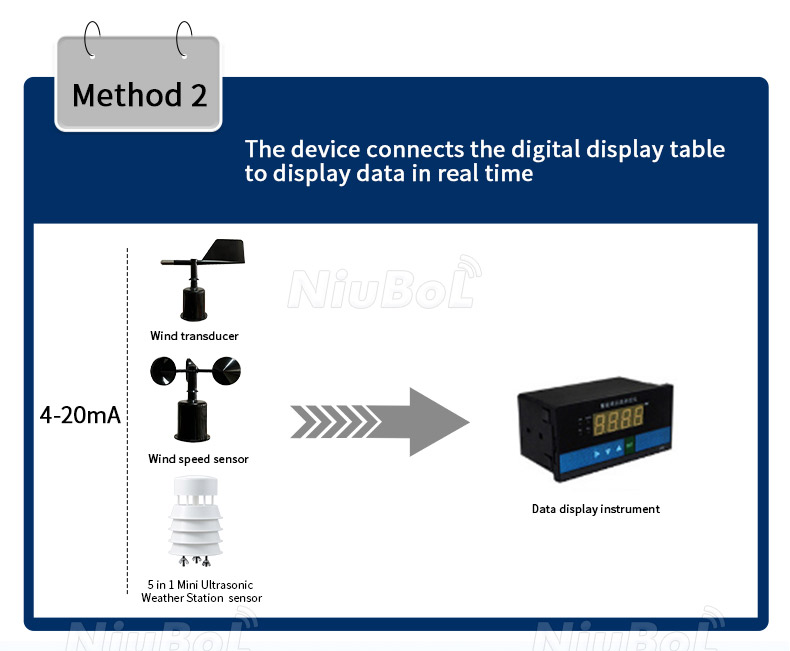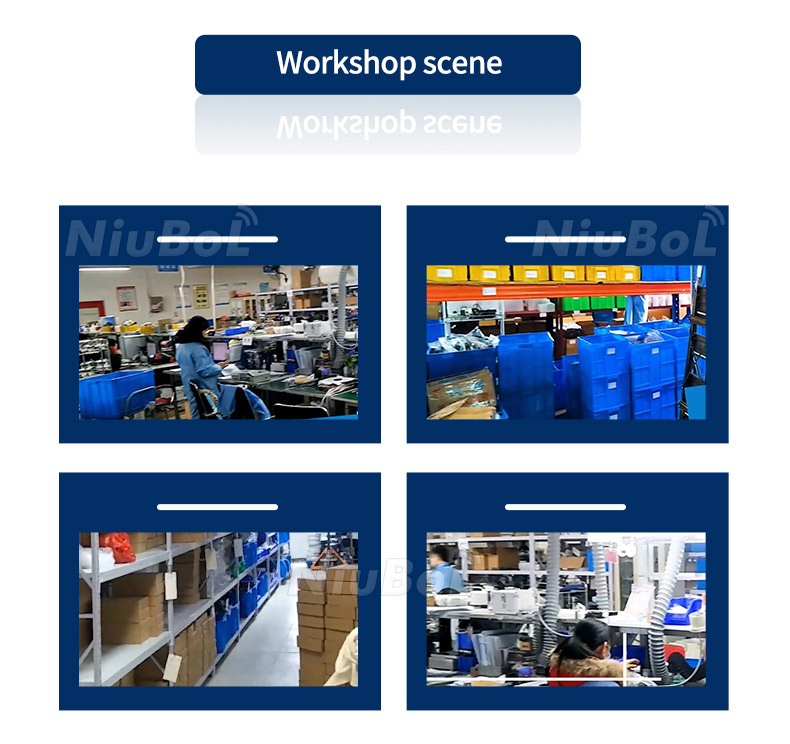

— Products —
 Consumer hotline +8618073152920
Consumer hotline +8618073152920 WhatsApp:+8615367865107
Address:Room 102, District D, Houhu Industrial Park, Yuelu District, Changsha City, Hunan Province, China
All products
Wind speed and direction sensors, often referred to as anemometers, are crucial components in meteorological stations, aviation, maritime operations, and various industrial applications. The RS485 interface you mentioned is a popular standard for serial communication that allows these sensors to be connected to data loggers, controllers, or other digital devices over long distances with high reliability.
Tel/WhatsApp:+8615367865107
Email:Arvin@niubol.com +Nearly 100 partner company in more than 68 countries. We are committed to providing high-quality, practical products to meet your needs and help you solve problems.Product Details
Wind speed and direction sensor is an instrument used to measure wind speed and direction. This sensor usually consists of two main parts: one for measuring wind speed and the other for measuring wind direction.
Integrated wind speed and direction sensor application scenarios:
The product has the advantages of large measuring range, good linearity, strong resistance to lightning strikes, convenient observation, stability and reliability, etc.
It can be widely used in meteorology, marine, environment, airport, port, laboratory, industry and agriculture and transportation.
Integrated wind speed and direction sensor technical parameters:
| Wind speed sensor | |
| Measuring range | 0~45m/s, 0~70m/s optional |
| Accuracy | ±(0.3+0.03V)m/s (V: wind speed) |
| Discrimination rate | 0.1m/s |
| Start wind speed | ≤0.8m/s |
| Product power consumption | 50 mW |
| Product weight | 130 g |
| Wind direction sensor | |
| Measuring range | 0 to 360° |
| Resolution | 1° |
| Accuracy | ±3° |
| Start wind speed | ≤0.5m/s |
| Product weight | 210 g |
| Product power consumption | 5.5 mW |
| Cable rating | rated voltage: 300V , temperature rating: 80°C |
| Power supply | DC5V/12V/24V |
| Wiring method | Voltage type: 4 wires, current type: 4 wires, RS-485 signal: 4 wires |
| Signal output | voltage type: 0-5V DC, current type: 4-20 mA |
| RS-485 signal | support ModBus protocol (baud rate 9600 can be set, address 0-255 can be set) |
| Material | metal shell, engineering carbon fibre airfoil and tailpiece, good strength, higher sensitivity |
| Working environment | Temperature -40℃~50℃ ; Humidity ≤100%RH |
| Protection class | IP45 |









Wind speed and direction sensors, often referred to as anemometers, are crucial components in meteorological stations, aviation, maritime operations, and various industrial applications. The RS485 interface you mentioned is a popular standard for serial communication that allows these sensors to be connected to data loggers, controllers, or other digital devices over long distances with high reliability. Here’s a comprehensive overview of the key aspects of wind speed and direction sensors with RS485 interfaces:
1. Basic Operation
- Wind Speed Measurement: Typically, wind speed is measured using either a cup anemometer, where rotating cups capture the wind, or a hot-wire anemometer, which measures wind speed based on cooling effect of airflow over a heated wire. The rotation speed or the cooling effect correlates with the wind speed.
- Wind Direction Measurement: Wind direction is usually determined by a wind vane, which aligns itself with the wind direction. The orientation of the vane is converted into electrical signals that represent the wind direction in degrees.
2. RS485 Interface
- Robust Communication: RS485 supports long-distance communication (up to 1200 meters) and multiple devices (up to 32) on a single bus. This makes it suitable for outdoor environments and large installations.
- Differential Signaling: It uses differential signaling to enhance noise immunity, which is particularly important in industrial environments or areas with high electromagnetic interference.
- Connection: Devices are connected in a daisy-chain or bus topology, requiring minimal wiring despite the potentially large distances covered.
3. Integration and Data Handling
- Protocol: Devices typically use a specific communication protocol over RS485. Modbus is one of the most common protocols for such applications, providing a standardized framework for requesting wind speed and direction data from the sensor.
- Data Output: The sensor outputs data such as wind speed (often in meters per second, m/s) and wind direction (in degrees from north). This data can be logged, displayed, or used for controlling systems (e.g., adjusting the position of wind turbines).
4. Wind speed and direction sensor RS485 Installation Considerations
- Location: Proper installation is crucial for accurate measurements. Sensors should be placed in open areas, away from obstructions, at a standard height (typically 10 meters above ground level for meteorological applications).
- Maintenance: Regular maintenance is required to ensure accurate readings, including cleaning and, if necessary, recalibration.
5. Wind speed and direction sensor RS485 Applications
- Meteorology: For weather monitoring and forecasting.
- Aviation: To provide data for airport operations and flight safety.
- Maritime: For navigation and safety at sea.
- Renewable Energy: Especially for wind turbine control and optimization.
- Building Management: For controlling ventilation systems based on wind conditions.
6. Choosing a Wind speed and direction sensor RS485
When selecting a wind speed and direction sensor with an RS485 interface, consider the following:
- Accuracy: Ensure the sensor meets your requirements for measurement accuracy.
- Durability: Look for robust construction capable of withstanding your environmental conditions.
- Compatibility: Check that the sensor’s output and protocol are compatible with your data logger or control system.
- Certifications: Depending on the application, certifications (e.g., for marine use) may be necessary.
In summary, wind speed and direction sensors with RS485 interfaces are versatile tools for accurately measuring wind conditions across a variety of settings. Their robust communication capabilities make them suitable for complex installations, ensuring reliable data transmission even over long distances.
Sensors & Weather Stations Catalog
Agriculture Sensors and Weather Stations Catalog-NiuBoL.pdf
Weather Stations Catalog-NiuBoL.pdf
Related recommendations
 Multi-Depth Soil Sensor RS485
Multi-Depth Soil Sensor RS485 TDR Soil Moisture Sensor
TDR Soil Moisture Sensor Pyranometer Solar Radiation Sensors
Pyranometer Solar Radiation Sensors Soil ph sensor
Soil ph sensor Tipping Bucket Rain Gauge
Tipping Bucket Rain Gauge Air Temperature and Humidity Sensor
Air Temperature and Humidity Sensor
Screenshot, WhatsApp to identify the QR code
WhatsApp number:+8615367865107
(Click on WhatsApp to copy and add friends)